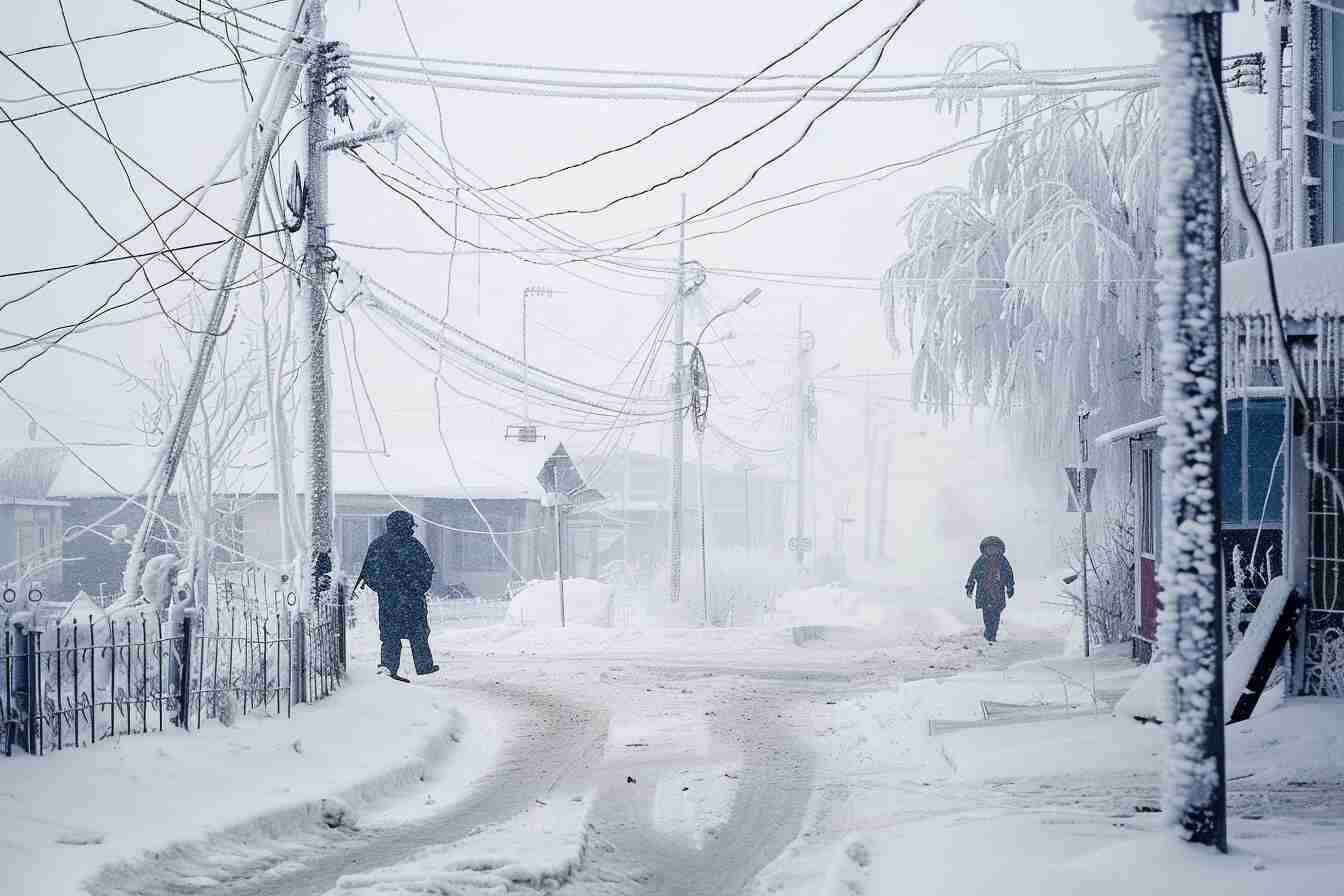Big Bang
The Universe was born out of the Big Bang, and the commonly held idea is that it was an explosion that started from a particular point. Such a situation would therefore mean that there is a center from which it all started. But while tempting, this representation of the Big Bang is incorrect. So, if an explosion did not cause the Big Bang, does the Universe still have a center?
Bing Bang Theory
The Big Bang is a scientific theory about how the universe started, and then made the stars and galaxies we see today.
The universe began as a very hot, small, and dense superforce (the mix of the four fundamental forces), with no stars, atoms, form, or structure (called a “singularity“). Then about 13.8 billion years ago, space expanded very quickly (thus the name “Big Bang”). This started the formation of atoms, which eventually led to the formation of stars and galaxies.
As a whole, the universe is growing and the temperature is falling as time passes. Cosmology is the study of how the universe began and its development. Scientists who study cosmology have agreed that the Big Bang theory matches what they have observed so far.

Model of possible evolutions of a multiverse or universe, with a white hole in the center that creates the Big Bang. KronicTOOL, Public domain, via Wikimedia Commons
Observations
An explosion starts at a precise point and quickly spreads outward. The materials that propagate the fastest are those that move outward the fastest. The further away an observer is from the center of the explosion, the less material that can reach him. The energy density decreases over time, and decreases more rapidly with the distance from the center. Thus, it will always be possible for an observer to reconstruct the center of the explosion.
Thanks to new observations, scientists have just calculated the age of our Universe more precisely: it would have been born 13.77 billion years ago.
However, this situation does not correspond to the Universe we are observing. The Universe looks the same over great distances: same densities, same energies, same galaxy distributions, etc. Distant objects, moving away faster from us, do not appear to be the same age as closer objects, which move at slower speeds; they are younger.
Instead of an explosion, general relativity predicts an expansion. A universe that begins from a hot and dense state, whose very spatial fabric expands. The common idea is that this event started at a particular point. But this idea is of course wrong. General relativity simply predicts the existence of a region filled with matter and energy from which the universe has evolved according to the laws of gravity.
According to the cosmological principle, the Universe is homogeneous and isotropic, that is, its appearance is independent of the direction in which it is observed; in other words, its general appearance does not depend on the position of the observer. Thus, regardless of the direction of observation, the Universe has the same physical properties (density, temperature, etc.). This principle finds several experimental confirmations, notably in the isotropy of the cosmic diffuse background, the aspect of de cernier being the same at all points in the universe.
This uniform light witnessing the Big Bang
This uniform light witnessing the Big Bang confirms that it happened simultaneously in all directions, thus rendering obsolete the very idea of looking for a center in the Universe. Especially since general relativity does not portend the finitude of the Universe; it could very well have been infinite from the start, then the notion of center would no longer have any meaning.
Surely you have heard of the Big Bang Theory, which describes how the Universe was “born” from a very dense and very hot mass of matter about 13.7 billion years ago. A progressive dilation, like an inflated balloon.
In addition, considerations of the metric, that is, the dynamics and geometry of space-time, point to the absence of a center. Indeed, to locate the center of a space, it is necessary to have a coordinate system. In general relativity, this coordinate system is space-time and its four dimensions (x, y, z and t). However, at the time of the Big Bang, this space-time is not yet constructed, so there is no way to be able to locate an event in a space that does not yet exist.
And if the Universe does have a center, it can be anywhere
And if the Universe does have a center, it can be anywhere; the part of the Universe that is accessible to us for observation is insufficient to reveal this information to us. To consider this hypothesis, we would have to detect a consequent anisotropy in the temperatures, the densities of matter or the distributions of galaxies. But so far, on large scales, the Universe seems to be the same in all directions. Thus, any observer can theoretically be the center of the Universe.
There is no specific area from which the Universe expanded under the impulse of the Big Bang, only a time from which this expansion began, approximately 13.8 billion years.
The Big Bang is therefore an event affecting the entire observable Universe at a given time. This is why to observe great distances in all directions means to observe the past. And so it is for this reason that, no matter the direction, the Universe has uniform properties.
What does Big Bang mean?
Event comparable to a gigantic explosion, which would be at the origin of the expansion of the Universe; cosmological theory describing the evolution of the Universe following this event. Figuratively. Upheaval causing radical change in a sector: The big bang of solar energy.
What are the first particles existing just after the Big Bang?
Physicists are recreating in particle accelerators the mixture of quarks and gluons that bathed the Universe during the first microseconds after the Big Bang.
Have you ever asked ? What created the Big Bang? Click here to find out!
How old is the Universe?
According to the latest calculations by astronomers: 13.7 billion years, with a margin of error of 1%. The answer to this question is based on observations from the WMAP satellite, which succeeded in mapping our universe in the microwave domain, barely 380,000 years after the big bang.
What is greater than the universe?
However, there is indeed something larger than a galaxy since our universe brings together billions of galaxies. When, in a portion of the universe, there is a grouping of several nearby galaxies (up to 3 million light years) this is called a “cluster” of galaxies.
This Is How It Begins: Unraveling the Mystery of the Big Bang
The Big Bang theory is a fundamental concept in cosmology that describes the origin and early development of the Universe. It proposes that the Universe began from a singular, extremely dense and hot state, and has been expanding and evolving ever since. In this article, we will explore the fascinating journey of the Big Bang theory and how it revolutionized our understanding of the Universe’s birth.
The Birth of the Universe
According to the Big Bang theory, the Universe originated approximately 13.8 billion years ago from a singularity, an infinitely small and dense point. At this moment of “cosmic birth,” the singularity began to rapidly expand, initiating the creation of matter, energy, space, and time. It was a cataclysmic event that marked the beginning of our Universe as we know it.
The Expansion and Cooling
As the Universe expanded, it also cooled down. In the early stages, the Universe was incredibly hot and dense, filled with a plasma of particles. As it expanded, the temperature dropped, allowing elementary particles to combine and form protons, neutrons, and electrons. Over time, the Universe became transparent to light, enabling photons to travel freely.
Formation of the Cosmic Microwave Background
Around 380,000 years after the Big Bang, the Universe had cooled down sufficiently for atoms to form. This event, known as recombination, resulted in the release of a burst of energy called the cosmic microwave background (CMB). The CMB is a faint afterglow of the Big Bang, and its discovery in 1965 provided strong evidence in support of the Big Bang theory.
Cosmic Evolution
Following the initial expansion, the Universe continued to evolve. Gravity played a crucial role in the formation of large-scale structures, such as galaxies, clusters, and superclusters. Over billions of years, stars ignited, galaxies formed, and complex structures emerged. The cosmic evolution, driven by the interplay of gravitational forces and other fundamental interactions, gave rise to the diverse and intricate cosmos we observe today.
Understanding the Big Bang
The Big Bang theory is supported by a wealth of observational evidence, including the observed redshift of distant galaxies, the cosmic microwave background radiation, and the abundance of light elements. The theory has been refined and validated through decades of scientific research, allowing us to piece together the early moments of our Universe’s existence.
Conclusion
The Big Bang theory stands as a cornerstone of modern cosmology, providing a compelling explanation for the birth and evolution of the Universe. From the initial singularity to the expansion, cooling, and formation of cosmic structures, the Big Bang theory offers us a glimpse into the awe-inspiring journey that brought our Universe into being. As scientists continue to unravel the mysteries of the cosmos, the Big Bang remains a central pillar in our quest to understand the origins of our existence.
Sources: Pinterpandai, Phys.org, CERN (European Council for Nuclear Research)
Photo credit: Author: Pablo Carlos Budassi (CC BY-SA 3.0) via Wikimedia Commons
Photo explaination: Artist’s logarithmic scale conception of the observable universe with the Solar System at the center, inner and outer planets, Kuiper belt, Oort cloud, Alpha Centauri, Perseus Arm, Milky Way galaxy, Andromeda galaxy, nearby galaxies, Cosmic Web, Cosmic microwave radiation and the Big Bang on the edge.



